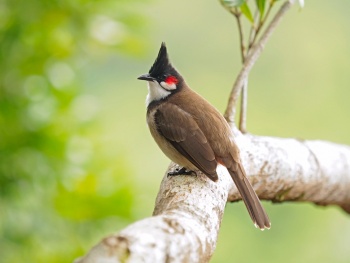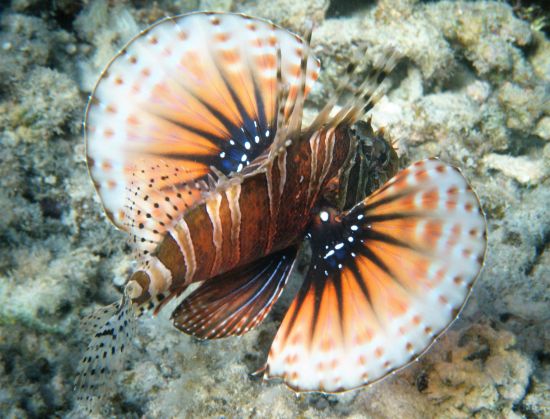Overview
Mauritius Island is one of the three larger islands, along with Reunion Island and Rodrigues Island, comprising the [Map 1]Mascarene Islands in the Republic of Mauritius. They are all located in the Western Indian Ocean east of Madagascar.
Birds
Notable Species
One of the most notable things about Mauritius Island is the number of species that can be connected to this location in one form or another. As well, the number of species that have been lost, and the number that remains.
According to Avibase[2], there are 124 species present.
Of those species, 23 of them are threatened to varying degrees. Of those threatened, 8 of them are endemics.
Of the species that have been reported as being found here,12 species are now extinct.
One of those extinct endemics of the Mauritius Island is the Dodo[3].
Rarities
Rare species that have been found on Mauritius Island can include, according to Avibase[2], Laughing Dove, Buff-banded Rail, Little Ringed Plover, Great Knot, Ruff, Broad-billed Sandpiper, Common Sandpiper, Green Sandpiper, Gray-tailed Tattler, Marsh Sandpiper, Wood Sandpiper, Collared Pratincole, Oriental Pratincole, White-winged Tern, Great Crested Tern, Lesser Crested Tern, White-capped Albatross, Sooty Albatross, Snowy Albatross, White-faced Storm-Petrel, Fairy Prion, Antarctic Prion, Slender-billed Prion, Great Frigatebird, Red-footed Booby, Western Cattle Egret, Squacco Heron, Black-crowned Night-Heron, Madagascar Fish-Eagle, Sooty Falcon, Peregrine Falcon
Check-list

Photo © by ammadoux
Chamarel, Rivière Noire District Mauritius Island June 27, 2019
Birds you can see here include:
Brown Noddy, Curlew Sandpiper, Ruddy Turnstone, Malagasy Turtle Dove, Rock Pigeon, Mascarene Martin, Red Fody, Red-whiskered Bulbul, White-tailed Tropicbird
Other Wildlife
According to a BBC article[4], bats are the only mammal native to Mauritius. The Mauritius flying fox and Rodrigues flying fox]are large fruit bats endemic to the area[5]. Everything else was introduced.
There are now a number of species, such as tortoises, crabs, macaques, to name a few, that have taken up residence.
There are now various wildlife management operations going on in the Republic of Mauritius.
Site Information
History and Use
Mauritius was first visited, it's thought, by the Portuguese in the early 1500s, but wasn't settled at that time.
It was named by the Dutch in the late 1500s and began revolving through a succession of countries in settling and/or governing roles starting in the mid-1600s.
Mauritius became an independent state of the Commonwealth in 1968 going through a period of difficulty which led to it becoming a Republic in 1992.
It still exists as a Republic[1], where it's subject to all the influences of any other such country in existence today.
Areas of Interest
Of the various attractions Mauritius Island has to offer, some of those of particular interest to birders and birding include the following.
Black River Gorges National Park, a forested 6,574 hectares/16,244 acres in a park situated in the southwest part of Mauritius Island. Within this park, is Piton de la Riviere which, at 828 meters/2716 feet, is the highest point. Hiking trails are through all areas of the park.
Bras d’Eau National Park, a 497 Hectare/1228 Acre park in the northeast part of the island. Within it are parts of some nature preserves and two hiking trails.
Mauritius has 3 Ramsar sites as part of their joining the Ramsar Convention. The Ramsar Convention is an international effort for the conservation and use of wetlands. The sites are the Rivulet Terre Rouge Estuary Bird Sanctuary, Blue Bay Marine Park, and Pointe D’Esny.
In addition, they are home to UNESCO World Heritage Sites and National Heritage Sites.
This and other more detailed and specific information can be found at the Republic's website[6].
Access and Facilities
Sir Seewoosagur Ramgoolam International Airport (MRU), located 26 miles southeast of the capital of Port Louis in Plaine Magnien, is the airport serving the island. As well, there are cruise lines serving the destination.
Consult a travel professional for up-to-date information if traveling to this destination.
References
- Encyclopaedia Britannica - Online - https://www.britannica.com/place/Mauritius
- Lepage D. (2020) Mauritius (main island) Bird Checklist - Avibase - Bird Checklists of the World. Retrieved 14 August 2020
- Encyclopaedia Britannica - Online - https://www.britannica.com/animal/dodo-extinct-bird
- BBC Earth article - Saving Mauritius's Rare Species - http://www.bbc.com/earth/story/20150914-saving-mauritiuss-rare-species
- Mauritiusisland.co - Mauritius Wildlife - http://www.mauritiusisland.co/mauritiuswildlife.html
- The Republic of Mauritius - https://www2.govmu.org/EN/Pages/default.aspx
Recommended Citation
- BirdForum Opus contributors. (2025) Mauritius Island. In: BirdForum, the forum for wild birds and birding. Retrieved 11 May 2025 from https://www.birdforum.net/opus/Mauritius_Island
External Links
Maps
GSearch checked for 2020 platform.1




